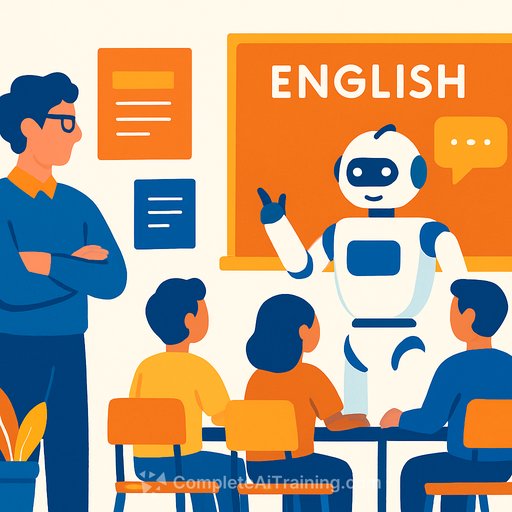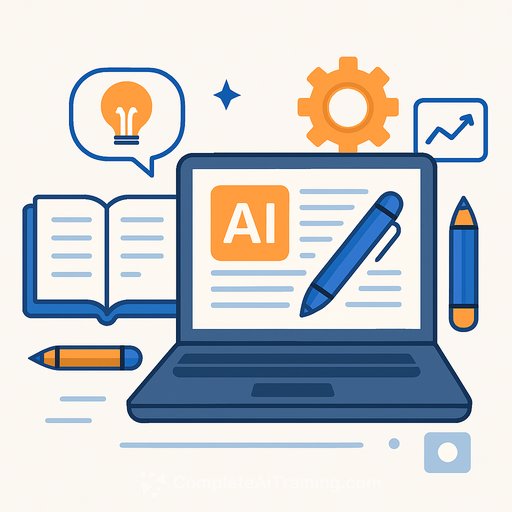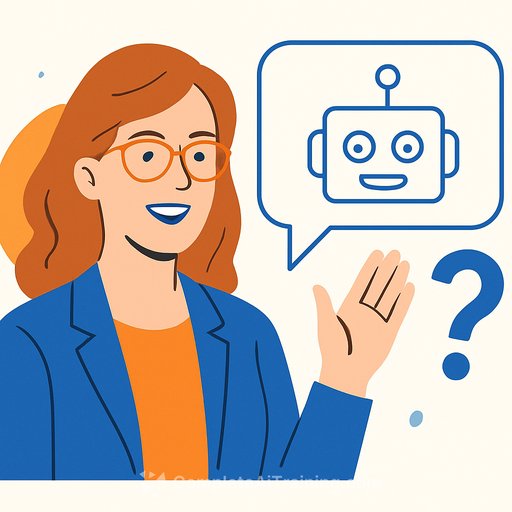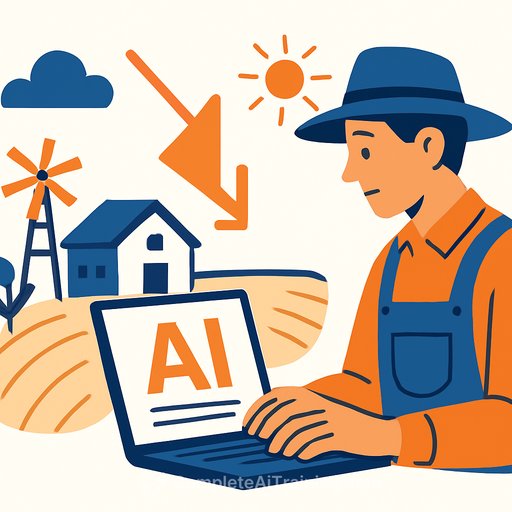What Happened When I Tried to Replace Myself with ChatGPT in My English Classroom
My students call it “Chat”—a nickname they all seem to have agreed on. They use it to create study guides, interpret essay prompts, and even register for classes. They ask it to propose weekly schedules, and they use it to make their writing sound more “professional,” including emails to professors. There’s a clear fear among them about informal diction or human errors being judged.
Like many educators, I’ve spent the past two years grappling with the role of generative AI in the English classroom. This issue should concern anyone who values reading and writing, not just teachers and students. Today’s English students are tomorrow’s creators and consumers of literature. If you care about thoughtful, human-generated writing being read widely, you want these young people to learn to write well.
College plays a key role in this. Large public universities turn public funding into new readers and writers. I see it happen every day. There are valid reasons students might want AI to write for them: heavy workloads, high tuition costs driving the need for good grades, and AI’s widespread presence in the workforce. But some reasons boil down to opportunistic laziness: if you can get away with using AI, why not?
This tension led me to an experiment in four sections of my class during the 2024-2025 academic year, involving 72 student writers. Instead of banning AI, I asked them directly: is it still necessary or valuable to learn to write? They would decide after reviewing the evidence. At semester’s end, they would vote on whether AI could replace me. What could go wrong?
AI as a “Calculator for Words”?
OpenAI CEO Sam Altman has likened ChatGPT to “a calculator for words.” This analogy hints at a big shift—like how math class changed with calculators. But change itself isn’t scary. Calculators didn’t kill math class. At the start, I surveyed my students about ethics: “Is using a calculator in math class unethical?” and “Is using generative AI in English class unethical?”
Almost none saw calculators as unethical. But opinions about AI in writing were split. Most were neutral or skeptical. Yet many admitted to using AI for editing drafts (22%), outlining (28%), interpreting prompts (38%), proofreading (50%), and brainstorming (56%). Some even used it for sourcing or drafting first versions.
This wasn’t the work of cheaters but students genuinely confused about the role of AI. That confusion was a good place to start.
Testing AI’s Strengths and Weaknesses
Over the semester, students completed writing assignments with and without AI. They found AI-generated prose often “flavorless” or “bland.” They noticed AI’s quirks—hallucinated quotes, a strange overuse of em-dashes, and sentences with exactly three examples. These quirks became running jokes, turning close reading into a fun activity.
Students agreed AI wasn’t great for first drafts but could help with brainstorming and editing. This aligns with broader assumptions about AI’s ethical and effective uses in writing.
Using AI to brainstorm openly is becoming common. For example, The New York Times tech podcast hosts use AI to come up with interview questions and summarize documents, though they always double-check the output. One host humorously compared AI to “a very smart assistant who has a dozen Ph.D.s but is also high on ketamine like 30 percent of the time.”
But there’s a difference between professional writers using AI as a tool and students learning to write.
Human + Machine: A Better Narrative
I had students read an essay by language faculty from MIT, which challenges the “human versus machine” story. It cites chess history: after Deep Blue beat Kasparov in 1997, Kasparov invented Centaur Chess, where humans team up with computers to compete.
At first, Centaur teams beat solo computers. This suggests that collaboration, not competition, is key. Although today’s AI engines have surpassed this, the idea remains: AI should be a partner, like training wheels or water wings. It helps most when it eventually makes itself unnecessary.
This partnership lets humans focus on higher-order problem solving, just as calculators did in math.
AI’s Impact on Creativity
We examined a 2024 study covered by NPR, where 293 amateur writers created short stories—some with AI outlines, others without. 600 readers ranked each story on style, novelty, and publishability.
AI-assisted stories scored 8% higher in novelty and 9% higher in publishability. The least creative writers improved most. But the downside? AI-generated stories tended to be very similar, recycling common tropes like “the real treasure was…” This poses a classic social dilemma: individual gain at the cost of group diversity.
Students acknowledged this sounded bad but noted genre formulas already cause some sameness. They weren’t sure if their own AI-generated essays resembling each other mattered.
Here are some AI-generated essay titles students submitted on technology’s role:
- Navigating the Digital Age: How Technology Shapes Our Social Lives, Learning, and Well-Being
- Navigating the Digital Age: A Personal Reflection on Technology
- Navigating the Digital Age: A Personal and Peer Perspective on Technology’s Role in Our Lives
- Navigating Connection: An Exploration of Personal Relationships with Technology
- From Connection to Disconnection: How Technology Shapes Our Social Lives
- From Connection to Distraction: How Technology Shapes Our Social and Academic Lives
- From Connection to Distraction: Navigating a Love-Hate Relationship with Technology
- Between Connection and Distraction: Navigating the Role of Technology in Our Lives
The students sat in silence, bothered by how bland these AI topics sounded. Unlike calculators, which produce identical numeric results, identical writing lacks appeal. Worse, it can reproduce stereotypes and tropes embedded in AI training data, which disproportionately includes adventure, fantasy, romance novels, and male-dominated internet spaces.
The Surprise of AI-Generated Emotion
Then came Max’s essay. Students read two introductions aloud, guessing which was human and which AI. The first painted a vivid scene of a midnight snowball fight, rich with sensory details and a meet-cute with a girl. The second was serviceable but clunky.
Everyone thought the lively, emotional first paragraph was human. Max then revealed it was AI-generated. The classroom buzzed with disbelief. The romance plotline, with its vague but appealing details, had convinced everyone. It showed how deep our cultural programming runs—mistaking rom-com tropes for reality.
AI for Teachers: A Different Story
In discussions about AI in education, we rarely hear about teachers using AI for lectures, assignment design, or grading. Yet AI offers advantages teachers don’t have: scale and efficiency. I grade hundreds of pages each semester. While grading is part of the job, districts like Miami-Dade Public Schools see value in AI grading for quick feedback, freeing teachers to focus on personalized help.
Some students have mixed feelings about AI feedback. One Northeastern student unsuccessfully petitioned for a tuition refund after AI was used in instruction. Still, the benefits for institutions and students are clear.
I asked my students if AI could replace me, especially in grading. After providing my feedback on midterm essays, I had students get AI feedback too. Then they revised their essays based on whichever advice they preferred and explained why.
Most preferred my feedback, noting AI’s annoying fixation on “improving transitions.” But many found AI’s advice similar and faster. Some, like Cruz, combined my comments with AI suggestions, blending human insight and machine speed.
This collaboration felt like a form of “Centaur Chess”: human and AI working together for better results.
For writers interested in learning how to work effectively with AI tools, exploring courses and certifications on prompt engineering and AI-assisted writing can be valuable. Resources like Complete AI Training’s courses by job offer practical guidance to develop these skills.
Your membership also unlocks:






